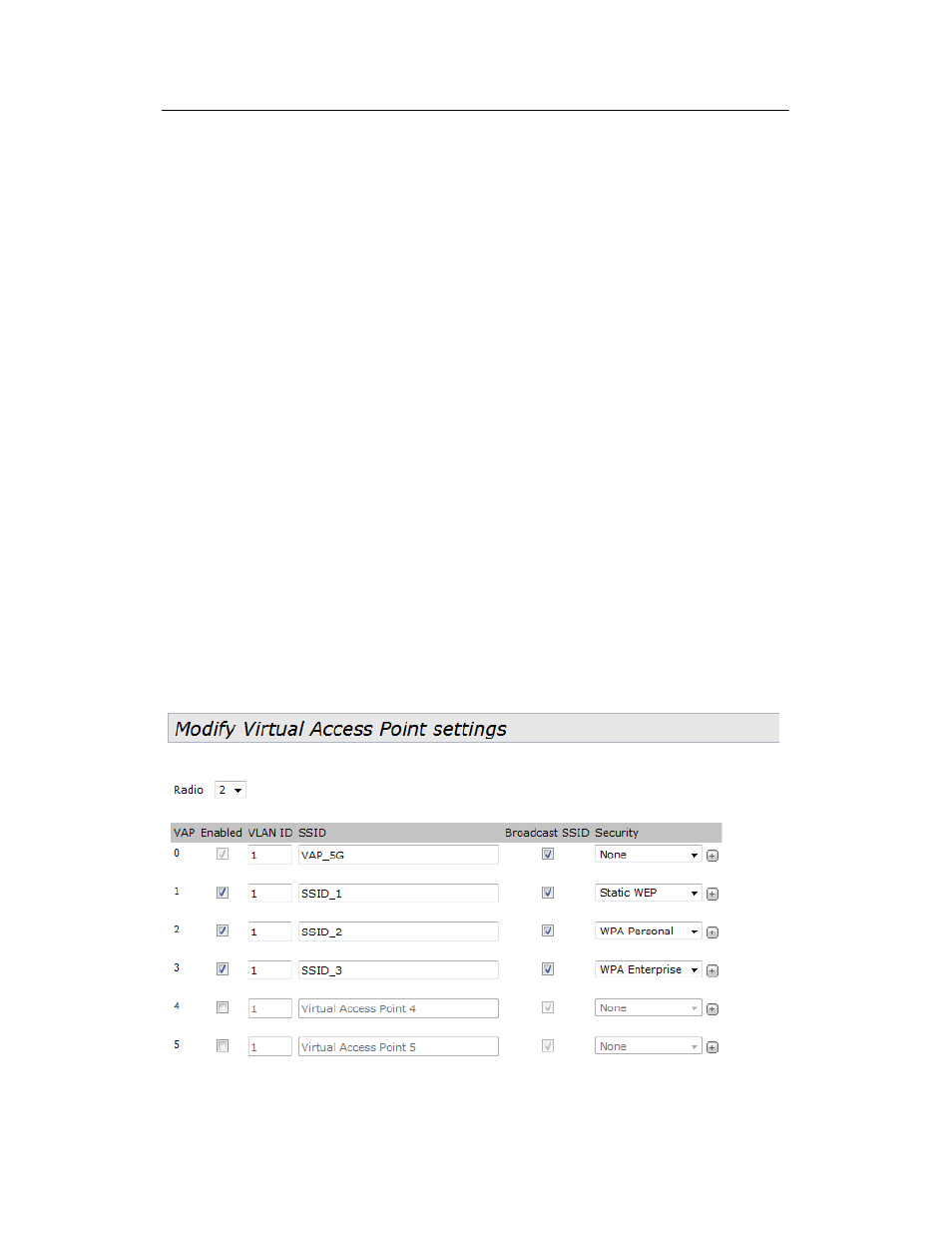4 virtual ap – Amer Networks WAP43DC Fat Web User Manual
Page 23

23
WAP43DC FAT Web Manual Chapter 4 Advance Configuration
4.4 Virtual AP
VAPs segment the wireless LAN into multiple broadcast domains that are the wireless
equivalent of Ethernet VLANs. VAPs simulate multiple APs in one physical AP. Each radio
supports up to 16 VAPs.
For each VAP, you can customize the security mode to control the wireless client access.
Each VAP can also have a unique SSID. Multiple SSIDs make a single AP look like two or
more APs to other systems on the network. By configuring VAPs, you can maintain better
control over broadcast and multicast traffic, which affects the network performance.
You can configure each VAP to use a different VLAN, or you can configure multiple VAPs to
use the same VLAN, whether the VLAN is on the same radio or on a different radio,
whether the VLAN is on the same radio or on a different radio. VAP0, which is always
enabled on both radios, is assigned to the default VLAN 1.
The AP adds VLAN ID tags to wireless client traffic based on the VLAN ID you configure on
the VAP page or by using the RADIUS server assignment. If you use an external RADIUS
server, you can configure multiple VLANs on each VAP. The external RADIUS server
assigns wireless clients to the VLAN when the clients associate and authenticate.
If wireless clients use a security mode that does not communicate with the RAIDUS server,
or if the RADIUS server does not provide the VLAN information, you can assign a VLAN ID
to each VAP. The AP assigns the VLAN to all wireless clients that connect to the AP
through that VAP.
